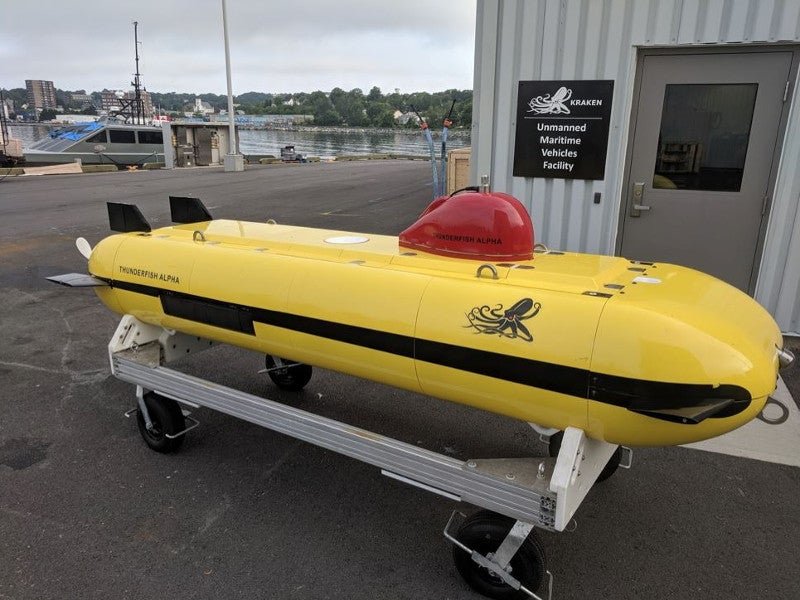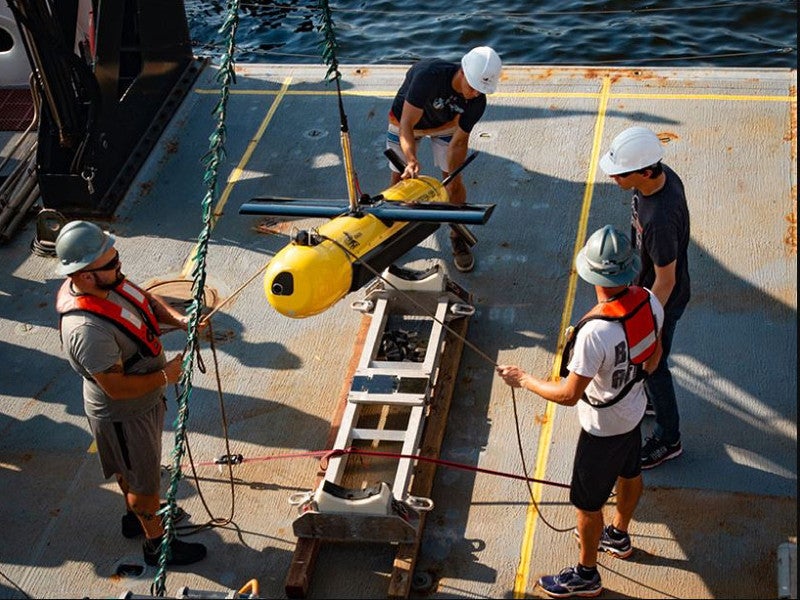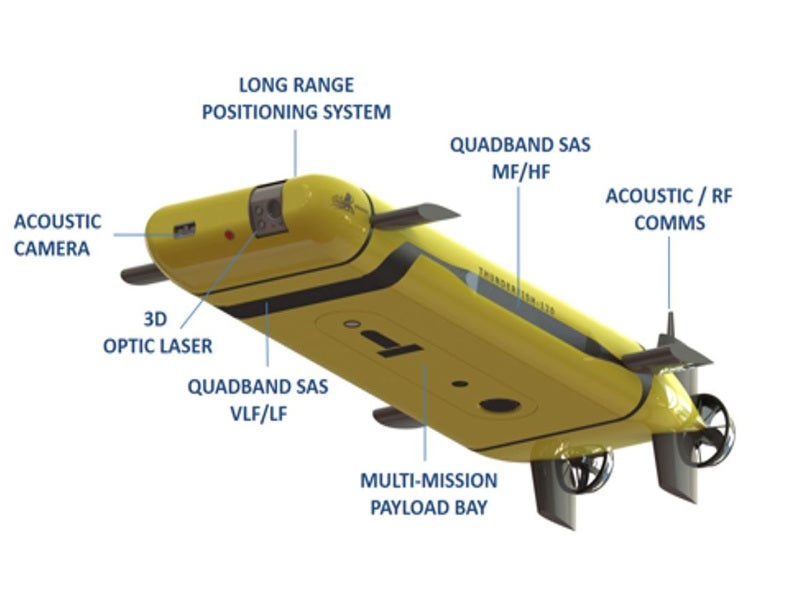Kraken Robotics is developing a ThunderFish family of highly advanced autonomous underwater vehicles (AUVs). The AUVs will be used for ultra-high-resolution seabed imaging and mapping applications.
In 2014, the development of ThunderFish AUV began with an aim to construct a compact and easy-to-handle vehicle, offering increased space for payloads and fast turnaround times.
Kraken Robotic Systems received a $1m contract from the Government of Canada for the ThunderFish 300 AUV in March 2019.
The AUVs will be a part of Kraken’s three-year $20m OceanVision project, which is a Canada Ocean Supercluster’s initiative. It aims to develop new marine technologies and products.
Kraken delivered ThunderFish 300 AUV to Defense Research and Development Canada (DRDC) after the end of sea trials in Halifax, Nova Scotia, in August 2019.
The ThunderFish XL underwater vehicle (UV) was exhibited at the Canadian Defence Security and Aerospace Exhibition Atlantic (DEFSEC Atlantic) in Halifax in October 2019.
Kraken Robotics received approximately $750,000 in funding from the National Research Council of Canada Industrial Research Assistance Program (NRC IRAP) for the development of ThunderFish XL AUV in October 2019.
ThunderFish AUV variants
ThunderFish AUV can be configured into different versions based on the customer’s requirement. It is available in three variants, which are ThunderFish Alpha, XL and 300.
The first in the ThunderFish series ThunderFish Alpha is a mid-sized AUV that can perform different AUV missions as it features flexible payload options and modular battery system.
ThunderFish AUV design and features
The AUV hull frame is made of titanium. The vehicle offers a range of oceanographic and military capabilities, including underwater surveys, environmental monitoring, habitat mapping and marine archaeology. It also performs naval mine countermeasures and inspection of submerged structures and downed aircraft.
AUV has a length of 3.5m, width of 0.95m and height of 0.50m. The AUV features Kraken stabilised autonomous launch and recovery systems (ALARS).
The new platform reduces cost, improves operational efficiency and simplifies the deployment process. Its modular design enables fast sensor reconfiguration and battery replacement.
AUV is also equipped with other sensors, including obstacle avoidance sonars, multi-beam echo sounder and advanced navigation / positioning sensors. AUV collects data and stores it in a 4TB hot-swappable data pod.
ThunderFish XL carries multiple payloads, including Kraken’s Multispectral AquaPix synthetic aperture sonar and SeaVision RGB 3D laser scanner, which enables high-resolution data sets and coverage rates to reduce survey times. The AUV has a payload capacity of up to 75kg.
The vehicle is also outfitted with optional sensor systems such as multi-beam sonar, sub-bottom profiler, magnetometer, oceanographic sensors, and acoustic camera.
Navigation and communication capabilities
The AUV uses a range of navigation systems, including inertial navigation system (INS), correlation velocity log (CVL), ultra-short baseline (USBL) and long baseline (LBL).
Communication systems onboard the AUV include an acoustic modem, iridium, radio frequency (RF) and Wi-Fi.
Engine and performance
The AUV is equipped with two SeaThrust rim-driven thruster systems with a thrust rating of 20kgf each. The SeaThrust unit integrates a brushless DC motor, driving an integrated hubless propeller.
The propulsion system is powered by high-density polymer-encapsulated, pressure-tolerant Li-ion batteries, which are swappable. The deck turnaround time of the vehicle is less than 30 minutes.
The battery features pressure-tolerant technology to improve performance and ensures an endurance between 20 and 48 hours. The AUV can reach depths of up to 6,000m.




